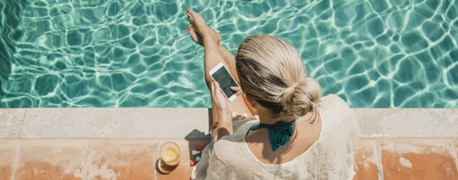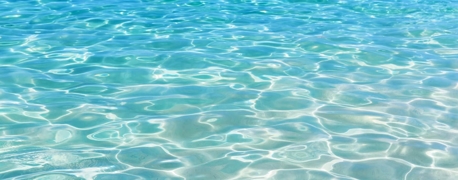Pulled Under: How Faulty Pool Drains & Equipment Cause Drowning Deaths

On June 15, 2002, seven-year-old Virginia Graeme Baker was swimming during a graduation party in McLean, Virginia. Known by friends and family as just “Graeme,” she was an avid diver and member of her community swim team.
But as she was playing in the hot tub, Graeme went under and did not resurface.
Her mother noticed almost immediately and tried to pull her out, to no avail. Graeme was firmly stuck to the bottom. It took two grown men to finally pry her loose, but it was too late. She had already drowned, stuck to the bottom of the hot tub by a drain that had created a suction force of roughly 700 pounds.
What happened to Graeme might seem like a one-in-a-million tragedy, but dozens of others had already experienced similar fates when she was lost. Her story, however, garnered national attention and resulted in sweeping changes to pool drain standards that are still in place today.
Graeme was the granddaughter of former Secretary of State James Baker III, a connection that helped her mother turn tragedy into a fight for real change. With backing from the U.S. Consumer Product Safety Commission (CPSC) and bipartisan sponsors in Congress, Nancy Baker helped shepherd the Virginia Graeme Baker Pool and Spa Safety Act (VGB Act), signed into law by President George W. Bush on Dec. 19, 2007.
Federal mandates in the VGB Act went into effect in December 2013, with updated standards going into effect on November 24, 2020.
How Can Faulty Pool Drains Cause Drowning?
According to the CPSC’s Guidelines for Entrapment Hazards: Making Pools and Spas Safer, there were 130 entrapment incidents in pools and spas from January 1990 to August 2004. 27 people, aged 22 months to 89 years, lost their lives as a result. Even after the final implementation of the VGA Act in December 2013, the issue of pool entrapment continued. A 2019 report by the CPSC identified 11 incidents caused by “circulation entrapment” in pools, spas, and whirlpool bathtubs from 2013 through 2017.
Simply put, modern swimming pool systems can be considered oversized vacuum cleaners. A circulation pump draws water from the main drains and skimmers, pushes it through a filter and heater or chlorinator, and returns it through wall inlets.
Because pumps can move 50-100 gallons per minute, the pressure difference between the suction line and the pool basin can exceed 500 pounds of force if a drain becomes blocked. When a domed drain cover is in place, water streams safely around the grate. When that cover cracks, loosens, or is flat, the opening can trap anything that covers it. That includes unsuspecting swimmers.
Below are the five suction-entrapment scenarios identified by the CPSC:
- Body Entrapment: This may happen when a swimmer’s body blocks the drain opening and is held by suction. This is the most common and frequently fatal form of pool equipment entrapment, responsible for the majority of entrapment deaths. Even adults may be unable to break free without the pump being shut off or the drain cover pried loose.
- Limb Entrapment: With this form of entrapment, an arm or leg penetrates a broken or missing drain cover and is locked in place by suction and the plumbing’s narrow diameter. Dislocations and compound fractures are common even if the victim survives.
- Hair Entrapment: Long hair can be drawn several inches past the grate and become snarled in an impeller turning thousands of revolutions per minute. Victims will be pulled forcefully toward the grate until the pump is stopped.
- Mechanical Entrapment: Jewelry, bathing suit straps, drawstrings, or even fingers can snag in corroded or ill-fitting covers, locking the swimmer in place underwater.
- Evisceration or Disembowelment: In a worst-case scenario, the pump’s vacuum can pull intestinal tissue into the pipe, causing massive internal trauma. This may happen if a swimmer sits on an open or noncompliant drain.
All of these scenarios can occur in seconds—often without a splash or cry for help.
Other Pool Equipment Failures Linked to Drowning
Defective drains are not the only part of a pool system that can cause a person to drown. Other pool equipment failures can have catastrophic consequences, leading to catastrophic injuries or death without warning.
Unguarded or Malfunctioning Return Pipes
In March 2024, an eight-year-old girl at a Houston hotel pool drowned after she was sucked into a return pipe. Initially, she was reported missing, but security footage revealed that she went under the water at the facility’s lazy river and never resurfaced. Rescuers drained the pool and located her body 20 feet inside an uncapped return pipe. Investigators believe the circulation pump had been wired to pull instead of push water, turning what should have been an outlet into a powerful suction inlet with no protective screen. Because the open pipe was below the waterline, the hazard was invisible until it was too late.
Return lines are supposed to push clean, filtered water back into the pool, creating only mild outward flow. When a pump is miswired, installed backward, or starved for make-up water (because skimmer or main-drain valves are partially closed), that same plumbing can generate powerful inward suction. The effect intensifies if the pipe opening is below the surface and lacks a proper grate: water rushes in to satisfy the pump’s demand, producing a vacuum that can trap hair, limbs, or—tragically—an entire child.
Because the intake is hidden beneath turbid water and the return velocity looks normal at other jets, bathers and lifeguards get no warning. The only remedy is strict compliance with the Virginia Graeme Baker Pool and Spa Safety Act: permanently attached anti-entrapment covers on every inlet or outlet, dual-drain configurations that halve suction at any single point, and safety vacuum release systems that shut the pump within seconds of a pressure spike.
Electrical & Bonding Faults: Electric-Shock Drowning (ESD)
Swimming pools and spas contain dozens of metal parts: light niches, ladders, handrails, diving board supports, and even reinforcing rebar under the plaster. The National Electrical Code (NEC 680.26) requires every conductive item to be bonded together and tied to the facility’s grounding system. Bonding ensures that, if a live conductor faults to metal, the current takes a low-resistance path back to ground and trips a breaker or ground fault circuit interrupter (GFCI) before swimmers can be harmed.
When bonding conductors corrode, break, or were never installed correctly—and a GFCI is missing or fails—the water can become energized. As little as 10–15 mA (thousandths of an amp) passing through the chest can freeze a swimmer’s muscles, pinning them underwater. The victim cannot call out, so bystanders often report a “silent drowning.” This phenomenon is known as electric-shock drowning (ESD).
Automatic Chemical Feeder Malfunctions
Many commercial and residential pools now use machines that automatically drip in liquid chlorine, acid, or other cleaning chemicals to keep the water clear and germ-free. Electronic probes “taste” the water for sanitizer and pH, then tell small pumps to add more chemical when levels drop. If a sensor, valve, or circuit board fails, the equipment can go haywire, dumping gallons of concentrated chlorine or acid into the pipes all at once. When strong chlorine meets acid in the plumbing, it can create a harsh green cloud of chlorine gas; a stuck acid pump can drive the water’s pH dangerously low, releasing eye-watering fumes and eating away at metal ladders and fixtures.
CDC incident files list dozens of pool evacuations and injuries caused by pool chemicals, including those caused by feeder malfunctions. Swimmers have suffered burning eyes, tight chests, coughing fits, and, in serious cases, fluid in the lungs that required hospitalization. Even a moderate overdose of chlorine can cloud the water, sting skin, and leave swimmers so disoriented that they tire quickly or slip underwater.
Liability for Pool Drain & Equipment Drownings
When a swimmer drowns because a drain cover broke, a return line was miswired, or a chemical feeder malfunctioned, the tragedy should not be viewed as an unavoidable accident. It should be seen for what it is: the result of someone ignoring clear safety rules. Under U.S. and state law, multiple parties may be held responsible.
Commercial Property Owners & Operators
Hotels, apartment complexes, gyms, municipalities, and water parks are meant to cater to the public. That status carries a non-delegable duty to keep pools in reasonably safe condition. Property owners must install VGB Act-compliant drains and drain covers, ensure electrical safety, properly maintain chemical feeders and other equipment, and shut down a facility the moment a hazard is discovered. Cutting corners to save on maintenance costs is negligence, plain and simple.
Management & Maintenance Contractors
Many resorts outsource daily pool care to third-party service companies. Those contractors are expected to document vacuum-release tests, verify drain cover integrity, log chemical-feeder alarms, and lock out failed pumps. If the logbooks are blank—or falsified—they may share liability for any injury or drowning that follows.
Manufacturers, Designers & Installers
Drains and pool equipment must be properly designed, manufactured, and installed for the safety of all swimmers. A drain cover that cracks or breaks under normal use, a filter clamp that breaks and launches a lid like a cannon, or a control board that defaults to “full feed” when a sensor fails are classic product liability defects. Under strict liability law, victims do not have to prove the maker was careless—only that the product was unreasonably dangerous and caused the injury. Engineers, electricians, and pool contractors who choose the wrong part or bypass safety controls during installation can also be held accountable.
Drownings linked to broken drains, faulty pumps, or neglected safety gear are not accidents—they are the result of negligence and wrongdoing. Every one of them could have been avoided had the responsible owners, contractors, or manufacturers met well-known standards. When they don’t, they must answer for the lives that were forever altered by their conduct.


